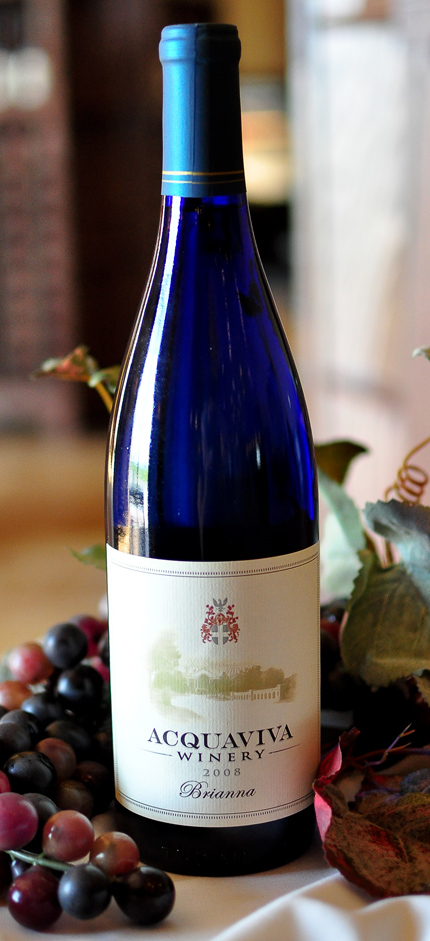New Ohio State Research On Abscisic Acid and Freeze Tolerance
Yi Zhang and Imed Dami from Ohio State University recently published a study that found foliar application of abscisic acid increased the freeze tolerance of grape vines in Ohio. During January, Bibiana Guerra wrote the following summary of the Ohio State study which was published in the American Journal of Viticulture and Enology:
• Abscisic acid (ABA), sometimes called the ‘senescence hormone”, is a naturally produced plant growth regulator which, when applied externally, has been shown to increase the freeze tolerance of several herbaceous and woody plants. ABA is already used on table grapes to enhance color and advance ripening. Given the importance of winter freeze damage to the Ohio grape industry, the researchers from Ohio State University set out to study the influence of foliar applications of ABA on the freeze tolerance of V. vinifera Cabernet franc, a variety extensively planted in the Eastern United States. They were particularly interested in two specific questions: 1) did ABA trigger any morphological changes in the cluster; and 2) what was the ideal timing of application.
• In 2009, the researchers started their ABA experiment at the research vineyard in Wooster, Ohio (Location 1). In 2010, they continued with the trial in Wooster plus added a new one at the research station in Kingsville, OH (Location 2). Using randomized complete block designs, they sprayed a dilution of ABA in water (at either 400 mg/L or 600 mg/L) either at veraison (V), 20 days after veraison (V20), 30 days after verasion (V30), 40 days after veraison (V40), or performed two applications at both veraison and 30 days after (V+V30). Treatments tested for each year and location looked as follows:
Location 1, 2009 Location 1, 2010 Location 2, 2010
4 yr-old CF clone 1 /3309 5 yr-old CF, clone 1 /3309 5 yr-old CF, clone /101-14
• control • control • control
• V • V • V
• V30 • V20 • V20
• V + V30 • V40 • V40
(400 mg/L): (400 mg/L): • V55
(600 mg/L):
Results:
• Effect of ABA on yield components and fruit composition. ABA did not affect yield in either year or location, nor did it affect the fruit ripening progression. Furthermore, at harvest, there were no differences in the basic fruit chemical composition (soluble solids, pH, TA). However, ABA applied at V and at V30 increased anthocyanin concentration in 2009 (by 17%), and ABA applied at V40 increased anthocyanin concentrations in 2010 (15%). The authors found no changes in the timing of budburst or in the level of fruitfulness the following season, meaning the concentrations used (400 or 600 mg/L) were optimum for foliar application and did not cause carryover effects.
• Effect of ABA on periderm formation and leaf senescence. The authors tracked periderm formation weekly by visually monitoring the shoot internode change of color from green to brown, until all internodes were lignified. As for leaf senescence, they tracked the amount of ‘green” in the leaves with a chlorophyll monitor. ABA caused no differences in periderm formation. However, ABA applied postveraison (V30 in Location 1, V20 in Location 2) consistently reduced chlorophyll content compared to the control. True to its name, ABA also caused the leaves to abscise two weeks earlier.
• Effect of ABA on bud dormancy. To assess bud dormancy, the authors divided well-lignified canes into one-node sections and placed them in trays filled with water, to force the buds to burst. Dormancy was estimated by the number of days for 50% of the buds on the tray to burst (D50BB). The higher the D50BB, the more dormant the buds were. Bud dormancy assays were conducted monthly from October to February. Applications of ABA at V and at V20 delayed budburst by an average of 4 days at Location 1, and by 3 days at Location 2, from November through February, when compared to the control. This means that ABA-applied buds entered a deeper dormancy. Later applications of ABA (V40, V55) did not affect bud dormancy.
• Effect of ABA on freezing tolerance. Authors visually assessed the ability of buds to remain viable after being exposed to freezing temperatures. These temperatures were brought about either artificially (with thermoelectric modules that gradually subject the buds to up to -50oC) or naturally (after a freezing event in 2011 that dropped the air temperatures to -19oC in Location 1, and to -23oC in Location 2). ABA applications at V and V20 consistently increased the freezing tolerance of the buds from November through January (by 2oC on average at Location 1, and 4.2oC on average at Location 2). However, ABA failed to increase the freezing tolerance during September and October (onset of cold acclimation), or during later February and March (de-acclimation period). Unlike early applications, when ABA was applied later in the season (V40 and V55), freezing tolerance was the same as that of the control.
• Effect of ABA on water content. The authors hypothesized that perhaps the mechanism by which ABA improved the freezing tolerance of buds was by inducing bud tissue dehydration, thus reducing the amount of water able to undergo freezing. They assessed the water content of buds before and after oven-drying. Indeed, bud water content from V and V20 treatments decreased by 15% on average compared to the control. In contrast, water content in V40 and V55 was the same as the control. In fact, all buds from all treatments (control included) were subject to a gradual loss of water from fall to winter (as part of the acclimation process), but this water loss was stronger in the V and V20 ABA treated buds.
In summary, foliar application of absicic acid at optimal rates (400 or 600 mg/L) was able to reduce bud injury by 40% in Cabernet franc vines compared to untreated vines exposed to -19oC. This bud injury reduction was maintained when the vines were subject to a different minimum temperature (-29oC), or grown at another location. ABA application was effective at inducing increased freezing tolerance and a deeper bud dormancy. It also caused increased berry anthocyanin accumulation. The ideal timing for ABA application was at veraison or 3 or 4 weeks post-veraison. The authors believe that foliar ABA can be used as a prophylactic tool to protect cold-sensitive cultivars grown in cold regions.
Author: Bibiana Guerra, PhD, Viticulture & Enology Technical Writer, guerra.wineink@gmail.com




